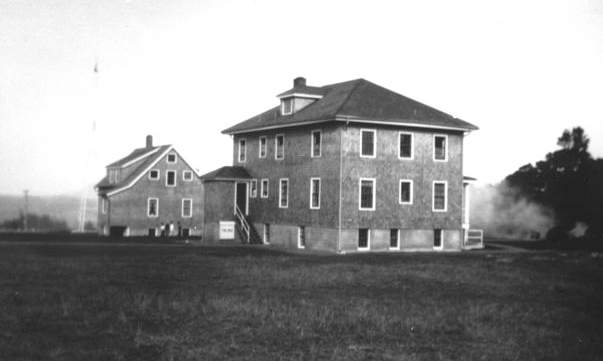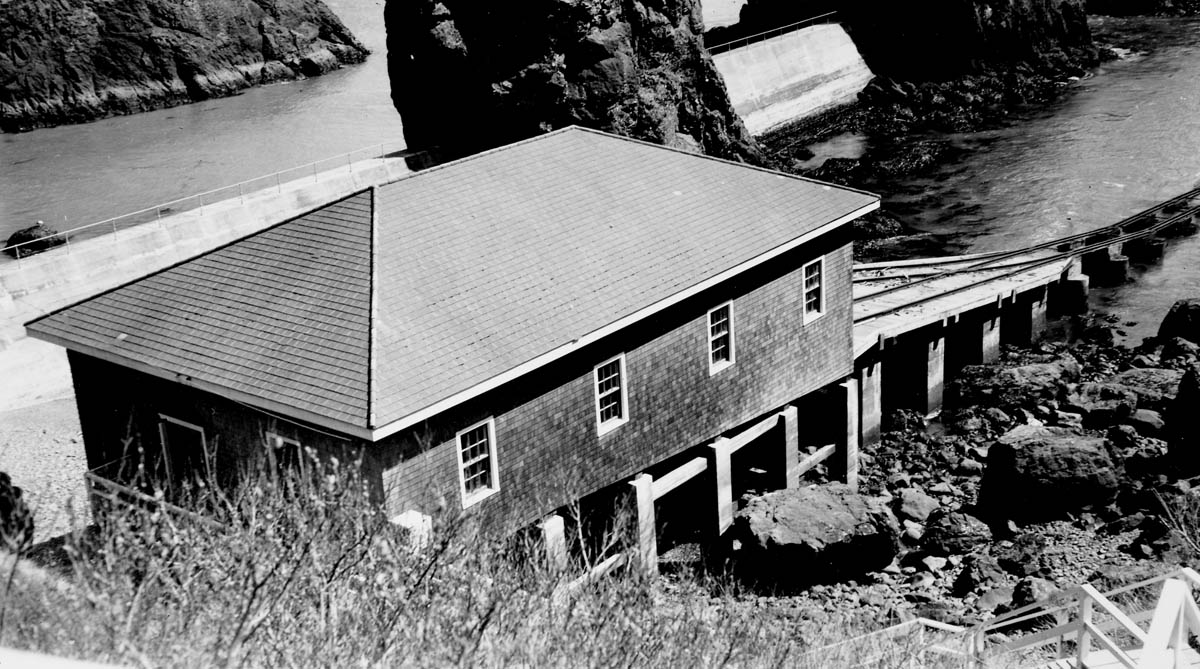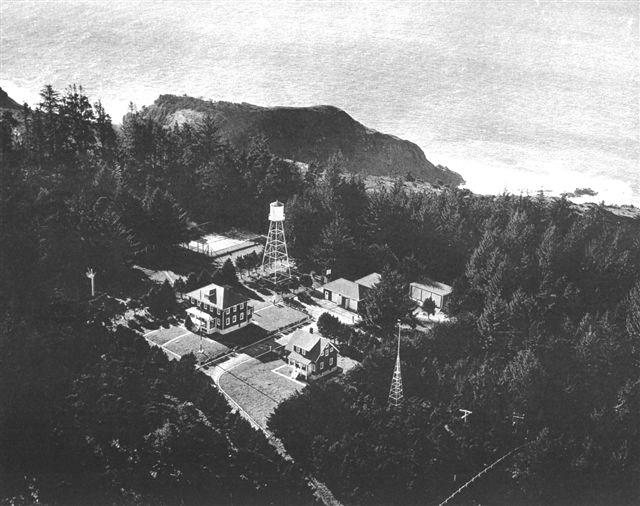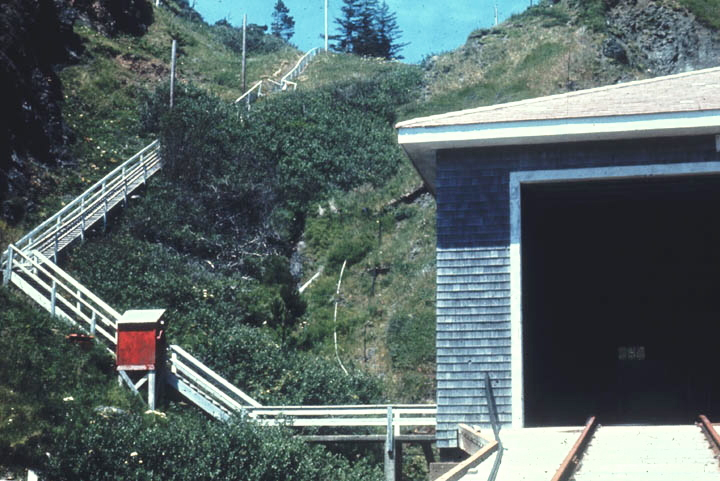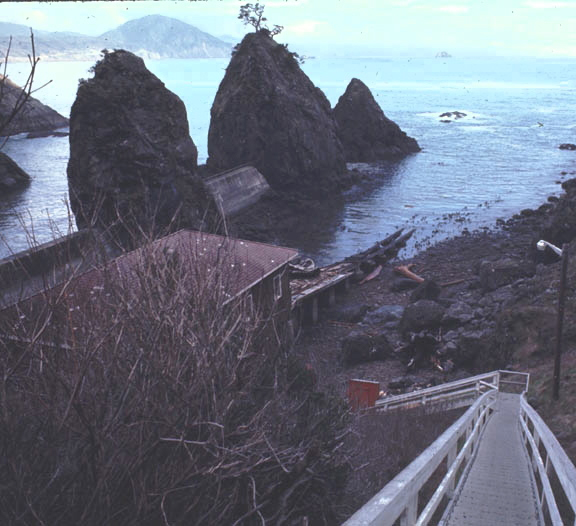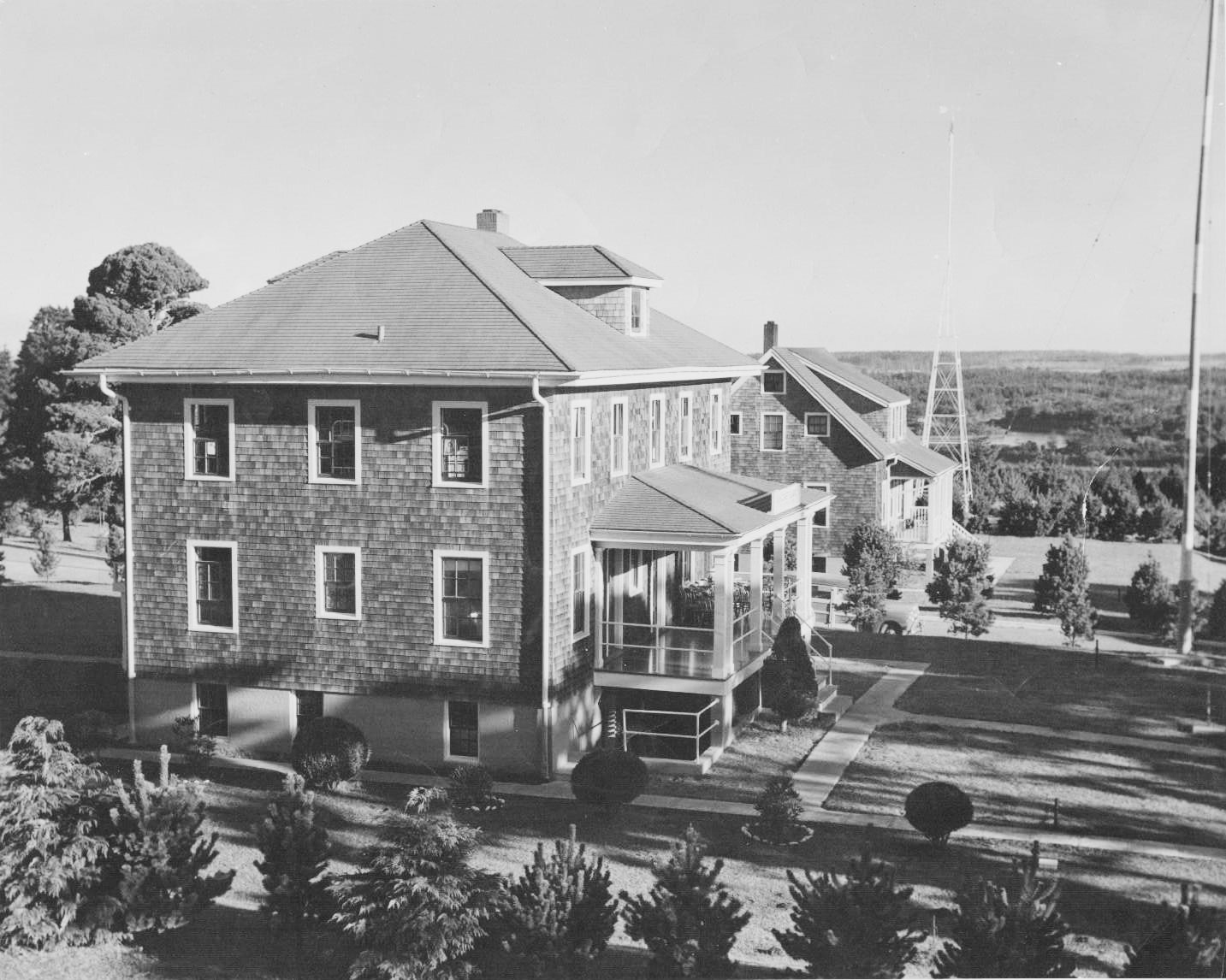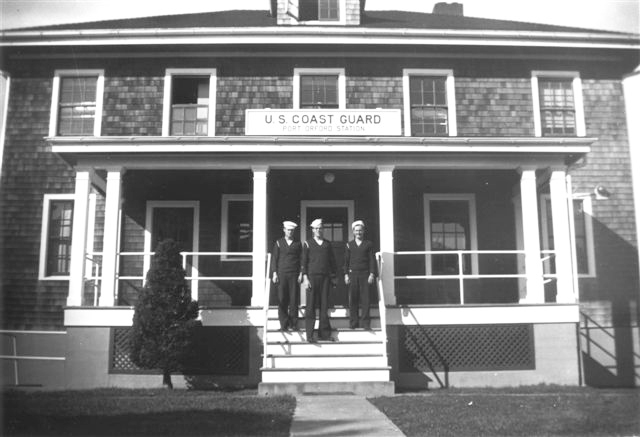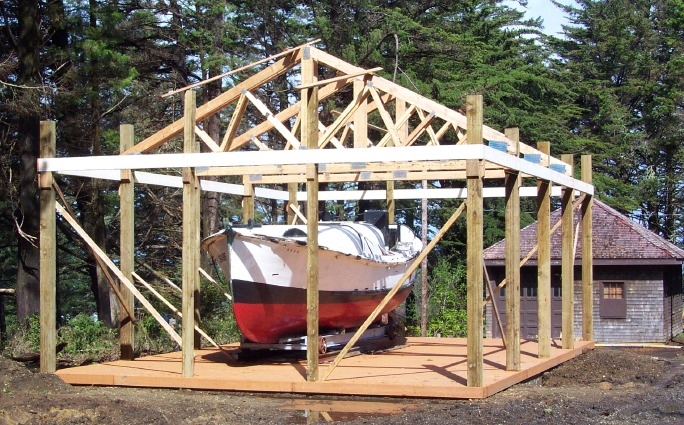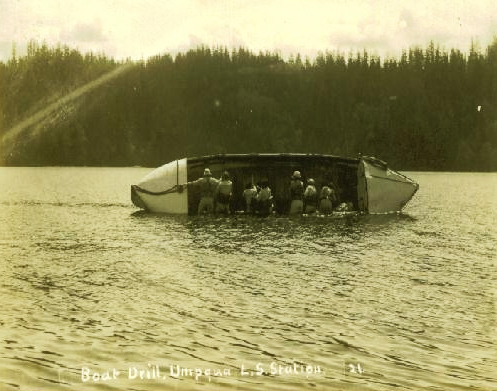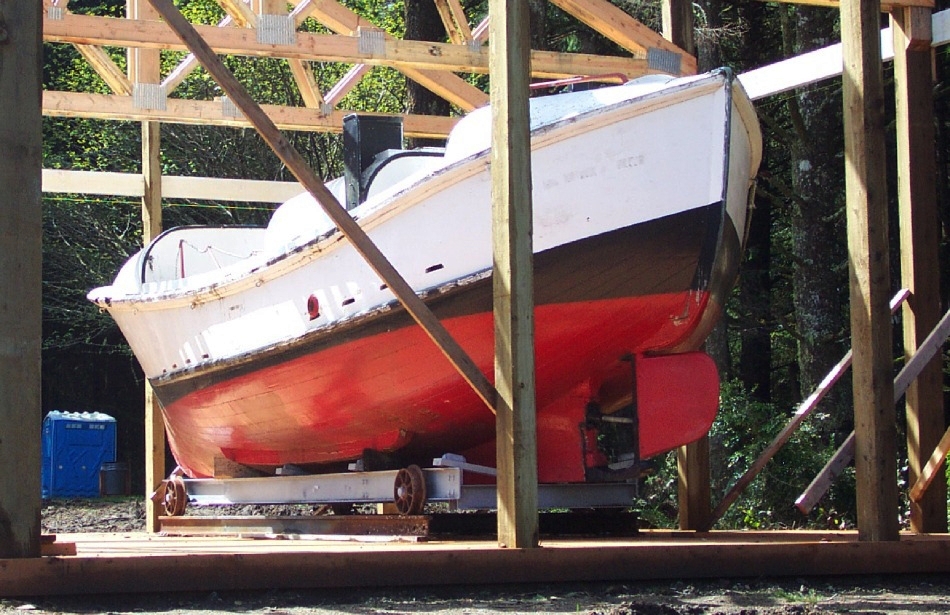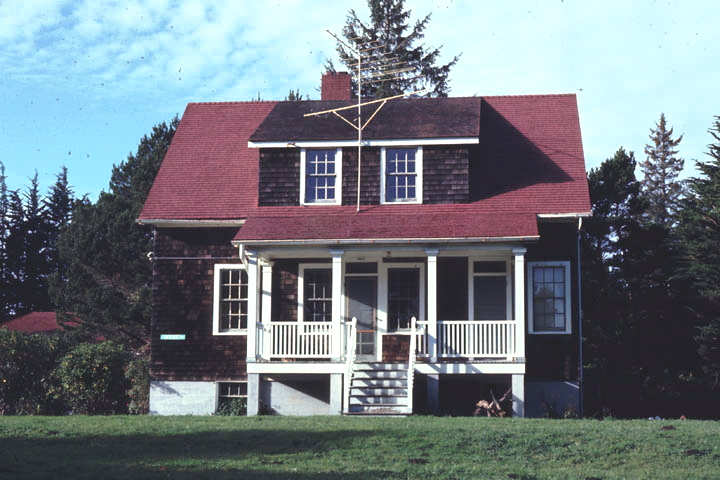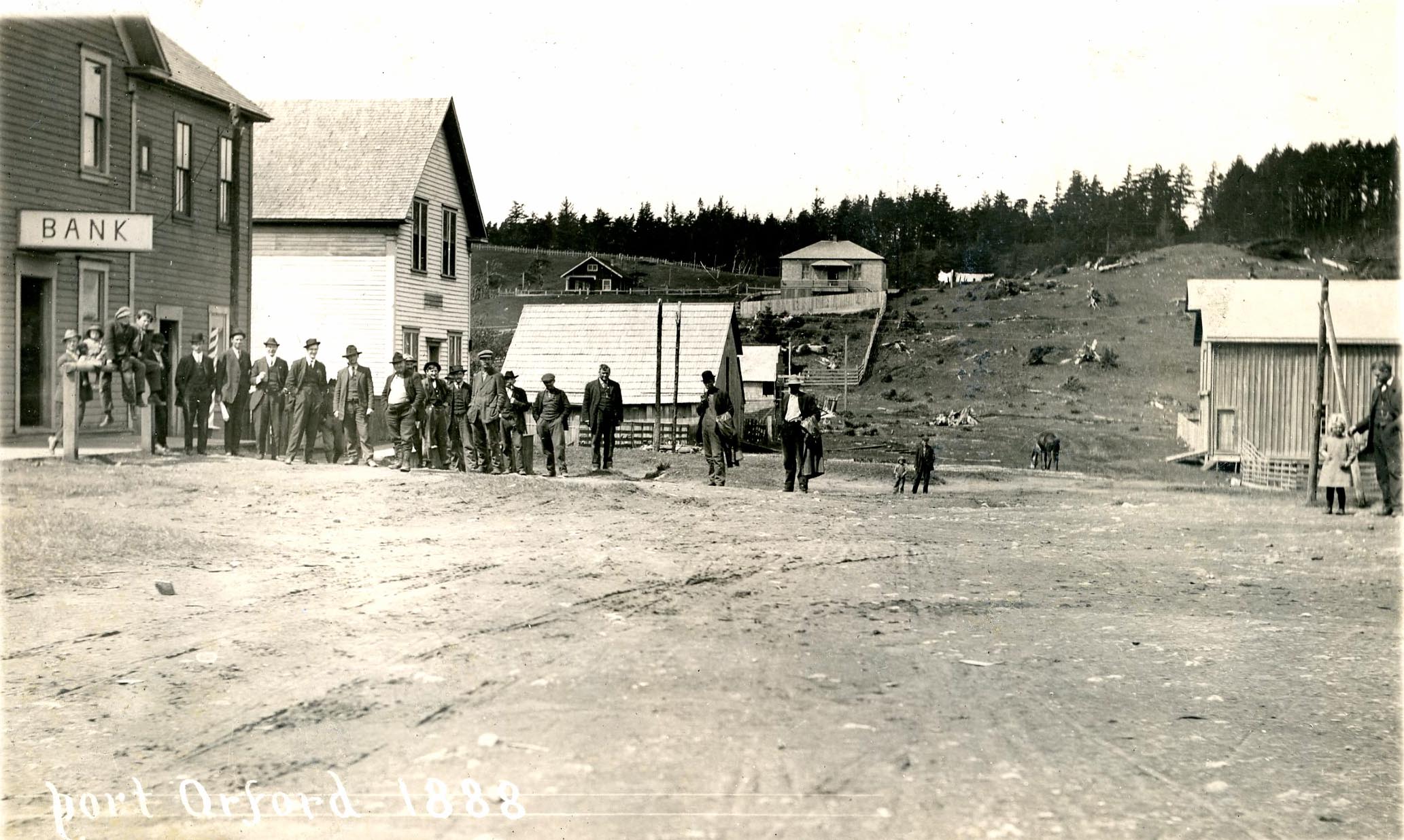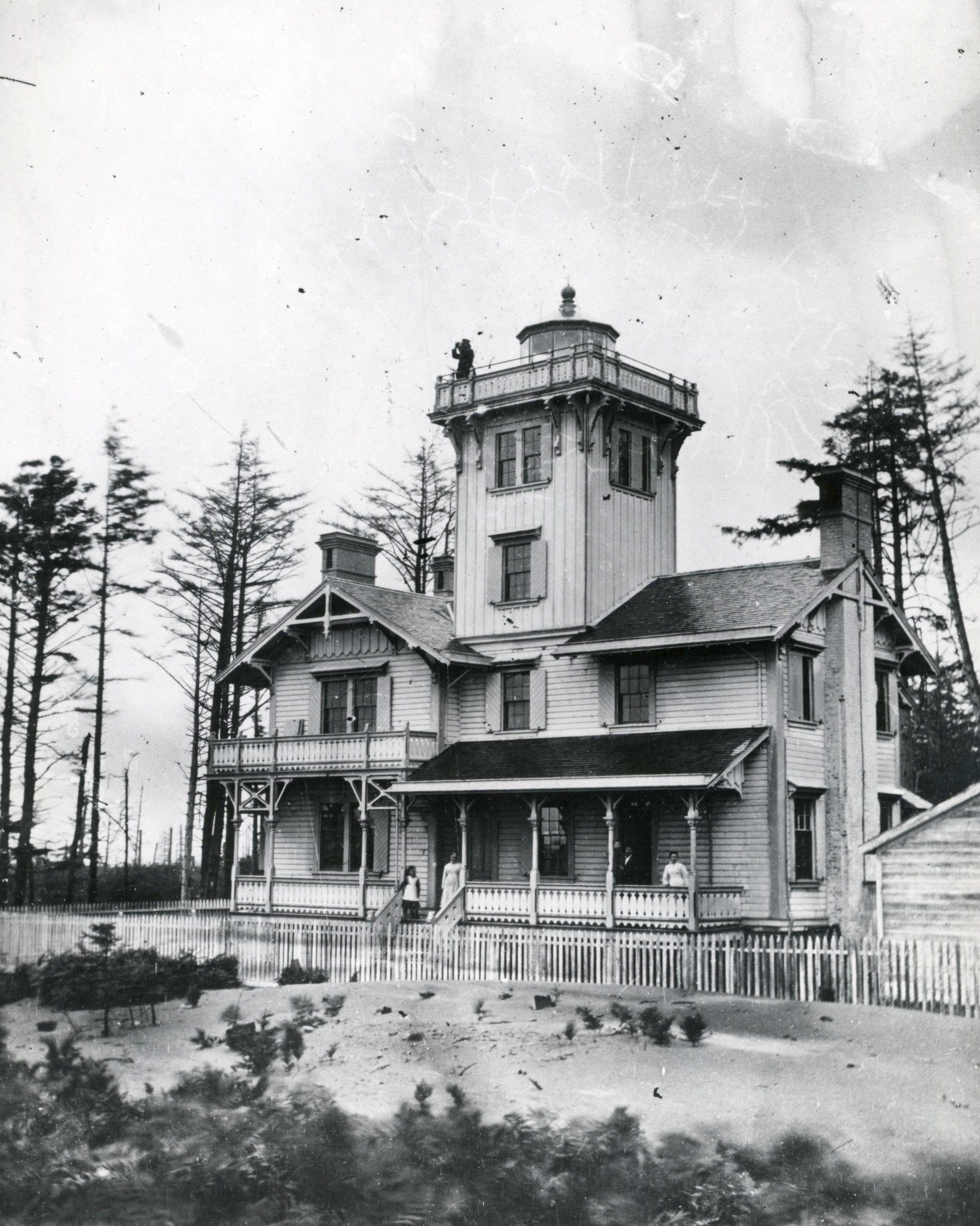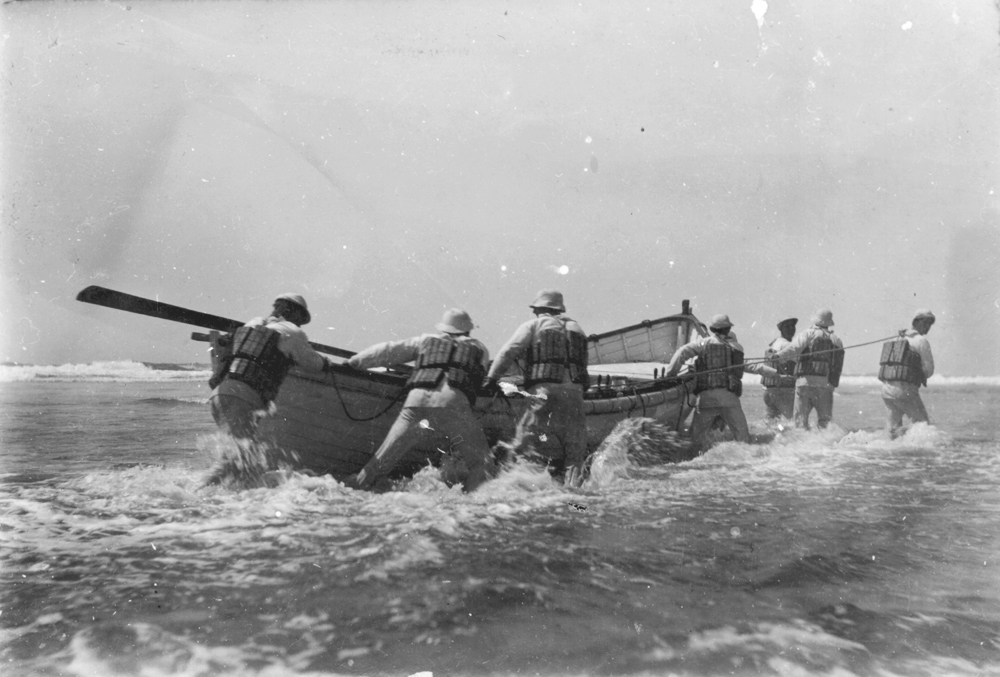Built by Julius Yuhasz and Arvid Olson, a U.S. Coast Guard Lifeboat Station opened in Port Orford in 1934. Constructed on a 280-foot-high cliff above Nellie’s Cove, the station included a house for the officer-in-charge, barracks that also housed operations, a garage, a storage building, a pump house, and a lookout tower. By 1939, a two-bay boathouse and breakwater had been built at the cove. Surfmen, who rowed the rescue or surf boats, negotiated the 532 steps—some concrete but most made of wood—to get from the station to the boathouse.
The U.S. Life-Saving Service was formed in 1871. Beginning in 1877, lifeboat or life-saving stations were installed on the Washington and Oregon Coasts. Buildings—usually built of wood—housed a keeper, boats, and other equipment, and, later, crewmembers, whose mission was to respond to ships in distress and rescue people first, then try to salvage cargo, if possible.
By 1916, there were six life-saving stations on the Oregon Coast and six in Washington. Three more were subsequently built in Oregon, including one at Point Orford.
The men at the station handled three shipwrecks—in 1936, 1937, and 1941—without any loss of life. During World War II, the Coast Guard increased station personnel from 13 to more than 100. Guardsmen patrolled the beaches with dogs, and when a Japanese submarine torpedoed U.S. Tanker Larry Doheny in 1942 near Port Orford, they rescued survivors (six men died). The same submarine launched a light aircraft, which pilot Nobuo Fujita flew over Curry County forests.
The Lifeboat Station was decommissioned in 1970 and then used by Oregon State University for marine research on, among other studies, fish genetics and the effects of salt and fresh water on salmon. Oregon State Parks acquired the station in 1976. In 1995, the Point Orford Heritage Society was formed to work with Oregon State Parks in restoring and interpreting the site. In 1998, the 100-acre station, including the five remaining buildings, was listed on the National Register of Historic Places. The buildings are of the Forge River-type and is the only such station remaining on the West Coast.
In 2000, due to the work of Society President Viola Cuatt and other volunteers, a museum opened in the barracks building, which is open from April through October.
-
![Port Orford Lifeboat Station Crew and Officer-In-Charge Quarters, 1930s-1940s.]()
Port Orford Lifeboat Station Crew and Officer-In-Charge Quarters, 1930s-1940s.
Port Orford Lifeboat Station Crew and Officer-In-Charge Quarters, 1930s-1940s. Courtesy Cape Blanco Heritage Society
-
![Port Orford Lifeboat Station Boathouse at Nellie's Cove, 1930s-1940s.]()
Port Orford Lifeboat Station Boathouse at Nellie's Cove, 1930s-1940s..
Port Orford Lifeboat Station Boathouse at Nellie's Cove, 1930s-1940s. Courtesy Cape Blanco Heritage Society
-
![Port Orford Lifeboat Station, 1930s-1940s, aerial, 1954..]()
Port Orford Lifeboat Station, 1930s-1940s..
Port Orford Lifeboat Station, 1930s-1940s, aerial, 1954.. Courtesy Cape Blanco Heritage Society, NA RG 26-DS
-
![Port Orford Lifeboat Station Boathouse and stairs at Nellie's Cove.]()
Port Orford Lifeboat Station Boathouse and stairs at Nellie's Cove..
Port Orford Lifeboat Station Boathouse and stairs at Nellie's Cove. Courtesy Cape Blanco Heritage Society
-
![Port Orford Lifeboat Station stairs at Nellie's Cove.]()
Port Orford Lifeboat Station stairs at Nellie's Cove..
Port Orford Lifeboat Station stairs at Nellie's Cove. Courtesy Cape Blanco Heritage Society
-
![Port Orford Lifeboat Station Crew Quarters, 1930s-1940s.]()
Port Orford Lifeboat Station Crew Quarters, 1930s-1940s..
Port Orford Lifeboat Station Crew Quarters, 1930s-1940s. Courtesy Cape Blanco Heritage Society
-
![Port Orford Lifeboat Station Crew Quarters, 1963.]()
Port Orford Lifeboat Station Crew Quarters, 1963..
Port Orford Lifeboat Station Crew Quarters, 1963. Courtesy Cape Blanco Heritage Society
-
Port Orford Lifeboat Station.
Port Orford Lifeboat Station Courtesy Cape Blanco Heritage Society, item no. 2003.03.26-1
-
![Port Orford Lifeboat Station crew drill at Flores Lake.]()
Port Orford Lifeboat Station crew drill at Flores Lake..
Port Orford Lifeboat Station crew drill at Flores Lake. Courtesy Cape Blanco Heritage Society
-
Port Orford Lifeboat Station.
Port Orford Lifeboat Station Courtesy Cape Blanco Heritage Society, item no. 2003.36-2
-
![Port Orford Lifeboat Station.]()
Port Orford Lifeboat Station..
Port Orford Lifeboat Station. Courtesy Cape Blanco Heritage Society
-
![Port Orford Lifeboat Station watchtower, 1930s-1940s.]()
Port Orford Lifeboat Station watchtower, 1930s-1940s..
Port Orford Lifeboat Station watchtower, 1930s-1940s. Courtesy Cape Blanco Heritage Society
Related Entries
-
![City of Port Orford]()
City of Port Orford
Port Orford claims to be the oldest town site on the Oregon coast, dati…
-
![Point Adams Lighthouse and Life-Saving Station]()
Point Adams Lighthouse and Life-Saving Station
Point Adams was given its name by Captain Robert Gray, who in his offic…
-
![U.S. Life-Saving Service in Oregon]()
U.S. Life-Saving Service in Oregon
The mission of the U.S. Life-Saving Service was to rescue those in peri…
Related Historical Records
Map This on the Oregon History WayFinder
The Oregon History Wayfinder is an interactive map that identifies significant places, people, and events in Oregon history.
Further Reading
"Port Orford Lifeboat Station." Point Orford Heritage Society. www.portorfordlifeboatstation.org.
Pinyerd, David. "The Preservation of Pre-World War II Coast Guard Architecture in Oregon." Master's thesis, University of Oregon, 2000. http://www.hp-nw.com/thesis.htm.

